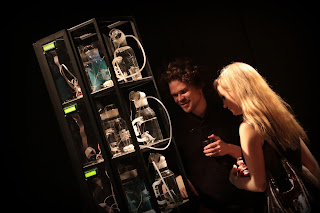photo from Wikimedia commons
The head of the horse of Selene from The British Museum is one of the four Selene's moon chariot (quadriga) horses. Two remaining horses and Selene’s torso are in the Acropolis Museum in Athens. Marble statues were located on the East pediment of the Parthenon which showed in central position the miraculous birth of the goddess Athena fully grown and armed, from the head of her father Zeus. At either corner of the tympanum the time of day has been depicted through showing sunrise and sunset: on the left side, Helios the sun-god and his chariot rising from the East, and on the right, his sister Selene, goddess of the moon sets down with her own horses.
The head of the horse of Selene is widely known as part of a collection of The Parthenon Marbles or even as The Elgin Marbles – a collection of Classical Greek marble sculptures. Sculptures were made circa 447–438 BC by the citizens of Athens under the supervision of the renowned architect and sculptor Phidias and his assistants. In 1801, Thomas Bruce, 7th Earl of Elgin obtained a controversial permit from the Sublime Porte, which then ruled Greece. From 1801 to 1812, Elgin's agents removed about half of the surviving sculptures of the Parthenon, as well as sculptures from the Propylaea and Erechtheum and send them to Britain. In 1816 following a public debate in Parliament the marbles were purchased from Elgin by the British government and were passed to the British Museum, where they are on display in the purpose-built Duveen Gallery.
literature/links:
wiki
British Museum
It's all Greek
In 2005 working on a concept of »puppet performance visual installation« a copy of Selena's horse was made by Jernej Mali, founder, and manager of Atelier Mali and my schoolmate at Academy of Fine Arts and Design in Ljubljana. Horsehead came into the concept of Horsepower project as one of the horse senses was its skin. The process included fast and furious cutting of Selena's horse copy into two parts, making of the mould with two component skin safe lifecasting Silicone Rubber, armature making with gypsum casting bandages, and finally casting of sculptures cast with cut carbon fibres and epoxy resin. All the work was discussed, assisted and supervised by Polona Černe.
.jpg)

































































